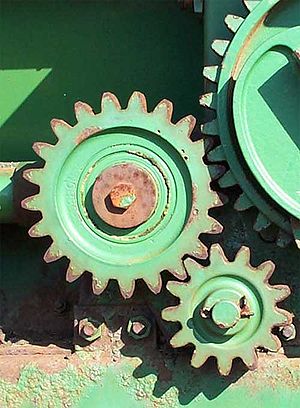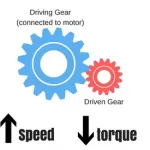The gear ratio of a gear train is the ratio of the angular velocity of the input gear to the angular velocity of the output gear, also known as the speed ratio of the gear train. The gear ratio can be computed directly from the numbers of teeth of the various gears that engage to form the gear train.
In simple words, gear ratio defines the relationship between multiple gears.
Gear Ratio= Output gear # teeth / Input gear # teeth
For example, if our motor is attached to a gear with 60 teeth and this gear is then attached to a gear with 20 teeth that drives a wheel, our gear ratio is 60:20, or more accurately 3:1
If you do not want to count a gears teeth (or if they do not exist), gear ratio’s can also be determined by measuring the distance between the center of each gear to the point of contact.
For example, if our motor is attached to a gear with a 1″ diameter and this gear is connected to a gear with a 2″ diameter attached to a wheel,
From the center to edge of our input gear is 0.5″
From the center to edge of our output gear is 1″
Our ratio is 1/0.5 or more accurately 2:1


